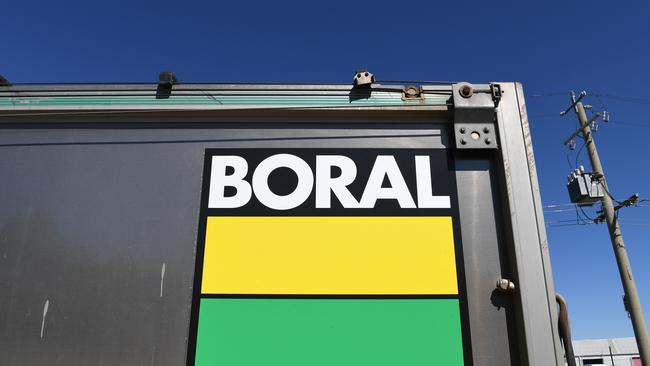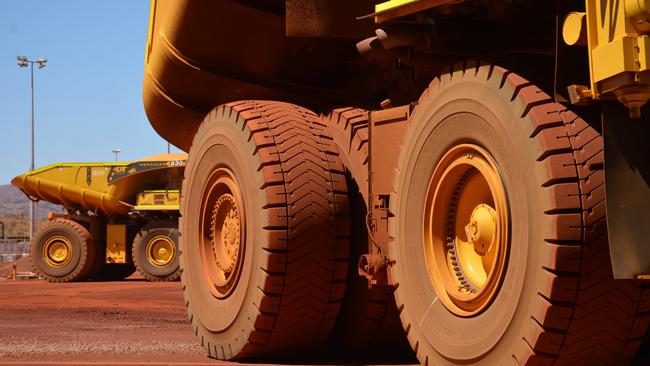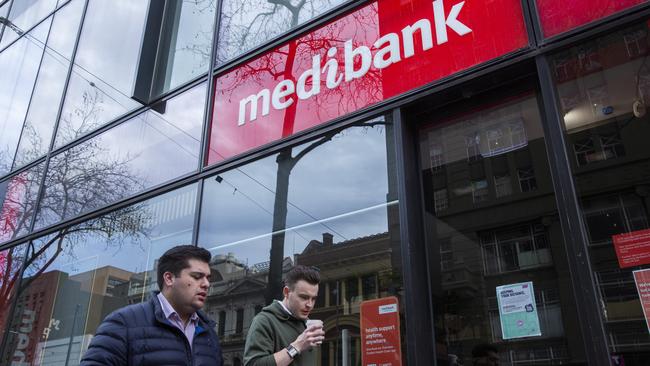
Floods and heavy rain across the east coast during the first quarter are likely to weigh on Boral’s investor update, to be given at Thursday’s annual meeting.
Flooding punched a $45m hole in Boral’s full-year result, particularly as quarries in NSW and Queensland were hit and rains affected the timing of deliveries to building sites. La Nina made its mark during the September quarter, when there were 26 heavy rain days in Sydney alone. Victoria is now catching up with flooding events seen across NSW and Queensland earlier this year.
Bansal, the former Cleanaway boss and most recently at Sanjeev Gupta’s InfraBuild, took charge of Boral on October 10. He is Ryan Stokes’s hand-picked CEO and is coming in to replace former boss Zlatko Todorcevski, who has already done much of the heavy lifting in terms of cost cutting and billions of dollars in asset sales.
Following the recent unwinding of a swap transaction, Stokes’s Seven Group now controls an effective 71.8 per cent of Boral.

One of Todorcevski’s last big initiatives at Boral was to put in place a new dynamic pricing model just as inflation was starting to bite.
It will be a test of the pricing policy if Boral has been able to offset some of the 200 per cent hit to gross energy costs while diesel prices remaining elevated and electricity rises are now being felt by heavy industry.
On Thursday Bansal said while the first quarter result was in line with internal expectations, it was too early to offer any significant guidance for the year. He wasn’t specific on performance given the short time he had been in the role.
Still, he said revenue is expected to be higher in the coming year, driven by price increases and higher volumes however it is unknown whether this will be enough to cover for the significant inflation Boral is facing.
“Boral remains highly committed to price realization,” Bansal said.
Boral usually pushes through its annual price rises in October but this year it brought this forward by two months. And it hit customers with the largest price increases in a decade. It’s also tightened up pricing leakage, where local Boral managers had tended to offer discounts with the focus previously on volume over margin. In recent months, Boral has introduced transport charges to help recoup higher diesel prices.
Another industrial heavyweight, Amcor, this week delivered a masterclass in how it handles inflation as it aggressively pushes through higher raw material costs. September quarter figures revealed Amcor extracted another $US400m ($623m) from its global customers to cover raw material costs. This represents average increases of 12 per cent, and annualised that is an additional $US1.6bn in additional revenue to recoup inflation costs.
At $3bn Boral is now a much smaller company that has long since abandoned plans of global expansion. For reference Cleanaway is twice the size.
Bansal says Boral’s competitive advantage comes from its vertical integration, enviable infrastructure assets, footprint and strong brand.
“I believe leveraging these areas...while running Boral as a modern industrial company is key to its next phase,” he said.
The annual meeting comes amid clear signs of a downturn in activity across the housing market, with the value of new home loans down 8.2 per cent in September and off 18.5 per cent on the year. This will fall further as the cash rate continues to rise.
The housing downturn will be felt, although Boral’s key profit margins are generated in big ticket infrastructure projects. Between Victoria and NSW, there is more than enough major work to see it through for years to come.
BHP costs watch
BHP’s newish head of procurement, James Agar, oversees an $US18bn buying budget including capex spending. That puts him at the pointy end of the supply and inflation squeeze as he oversees everything the miner buys, from the smallest bolt to giant earth movers. Size doesn’t insulate BHP from inflation, with Agar saying BHP like every industry is experiencing a combination of the “good” or demand-led inflation and the “bad” supply bottleneck inflation.
While there are signs of hope, the strong message is that the lag effect of inflation is likely to persist until at least the end of this financial year.
Speaking at the IMARC mining conference in Sydney, Agar said while a combination of the Russian invasion of Ukraine, tight labour markets and Europe’s energy crisis were together presenting a major challenge, there has been some improvement in global supply chain performance.

“Aggregate supply chain disruption in manufacturing is now significantly lower than in the second half of calendar 2021,” Agar said. “Shipping delays and port congestion have eased considerably over the same time frame”.
However, he sounded a cautionary note: “We do expect the lag effect of inflationary pressures to remain a persistent challenge through the 2023 financial year.”
The cost side pressures come as hard rock miners are feeling a squeeze on top line revenue with spot iron prices pulling back toward the $US80 a tonne mark on fears the pace of China’s slowdown has accelerated.
The thinking inside BHP is the near term global outlook remains uncertain and fragile with the chances of a recession in Europe and UK almost certain. The US is slowing but even with China’s zero-Covid policy, it will still be a source of stability for commodity demand over the next 12 months, with billions of dollars worth of economic stimulus programs to progressively take effect.
Agar also highlighted a policy push with suppliers dubbed radical transparency, aimed at changing the relationship between the miner and companies that supply it with services and equipment.
Here BHP recognises that being a powerful buyer can distort the relationship. It is also prepared to use its influence to align suppliers with its policies – particularly when it comes to decarbonisation. Agar says the policy has helped during the pandemic by minimising supply chain disruptions.
“By being transparent with each other – clear about our goals, open about our challenges – we stand to build mutual value,” he said. “And we will build truly resilient supply chains”.
Cyber ratings attack
Could a cyber attack be enough to trigger a credit ratings downgrade? That’s what ratings agency Fitch is mulling as it looks to add a possible cyber overlay when it assesses sovereign credit ratings. However, it still has a long way to go on such a move.
Following hacks crippling a string of Australian companies from telco Optus to health insurer Medibank, it’s a sobering thought that a sophisticated hack could undermine a banking system or even the central bank, which could result in serious strain on the nation’s finances.
Fitch noted after then prime minister Scott Morrison called for an inquiry into the origin of the Covid-19 virus in 2020, Australia was hit with a series of cyberattacks from what was described at the time as a “sophisticated state-based actor”.

The ratings agency says the most dangerous cyber threats come from cyber-capable states and from criminal groups sheltered by them. Sanctions and rising tensions from Russia’s invasion of Ukraine have only heightened fears of a global escalation in cyber attacks.
Ranked alongside other sovereign credit drivers, Fitch sees the risk of a severe cyber attack as a tail risk, and a low probability event but with potentially significant impact.
Possible financial shocks from cyber attacks range from short-term ones, such as disrupting payments systems, tax collections or critical infrastructure, to structural ones such as undermining governance. Most likely targets are central banks or treasury.
In the event of a major cyber attack, Fitch looks at its impact on the economy, public and external finances and other relevant credit variables relative to ratings headroom and financial, operational and reputational impacts, in line with its criteria. The assessment could lead to a negative rating action.
johnstone@theaustralian.com.au




Boral chief executive Vik Bansal has only been in the seat for a little over three weeks but is coming up against a bigger force than the Stokes empire: the weather.